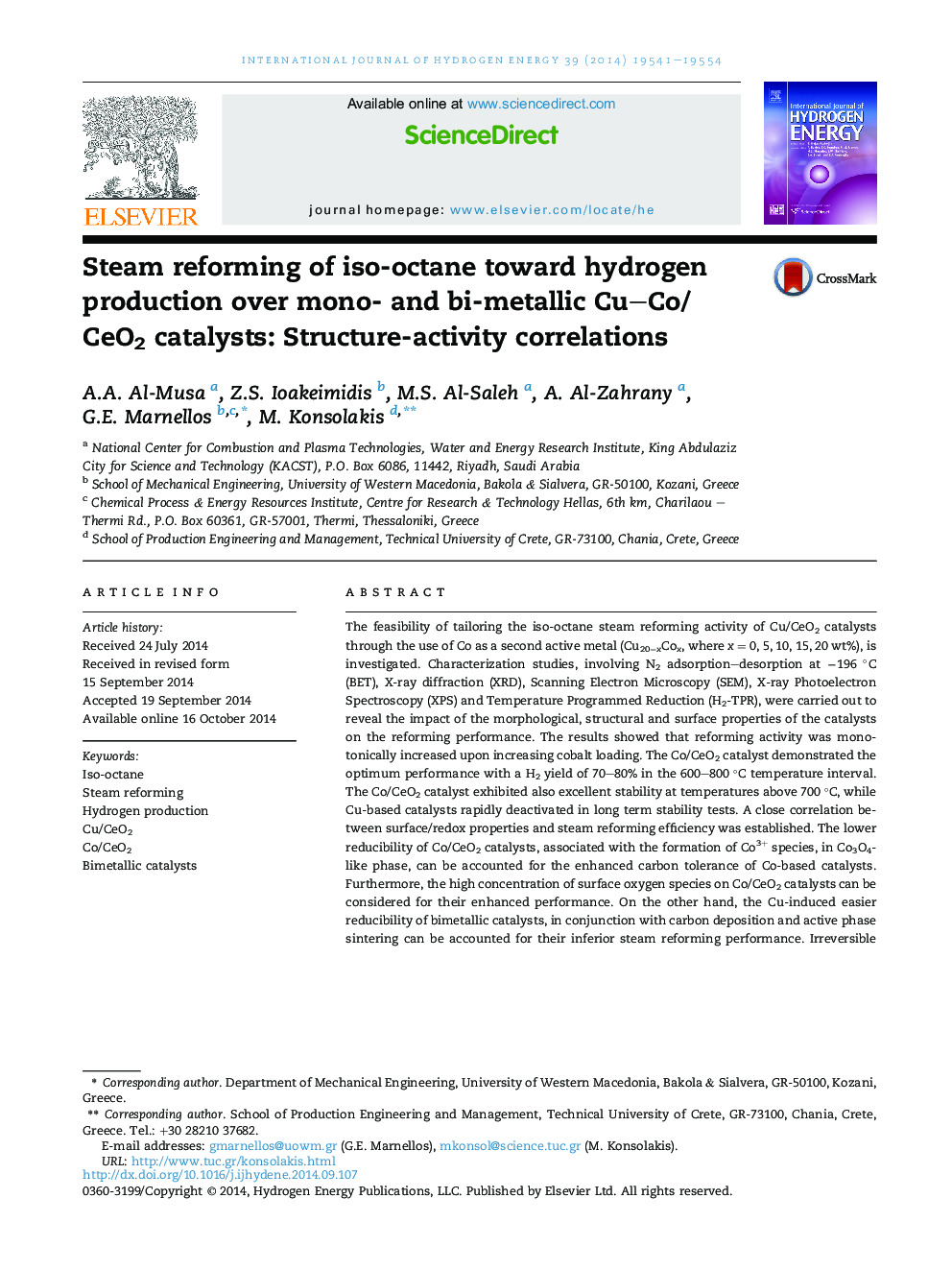| کد مقاله | کد نشریه | سال انتشار | مقاله انگلیسی | نسخه تمام متن |
|---|---|---|---|---|
| 1280705 | 1497475 | 2014 | 14 صفحه PDF | دانلود رایگان |

• Steam reforming of iso-octane over bimetallic Cu20−xCox/CeO2 is examined.
• Co/CeO2 catalyst exhibits the optimum H2 yield and lifetime stability.
• Carbon tolerance of Co/CeO2 attributed to low reduction potential linked with Co3+ species.
• Carbon deposition and catalyst sintering result in deactivation of Cu-based catalysts.
• Cu-induced over-reduction of ceria may also consider for the inferior performance of bimetallic catalysts.
Τhe feasibility of tailoring the iso-octane steam reforming activity of Cu/CeO2 catalysts through the use of Co as a second active metal (Cu20−xCox, where x = 0, 5, 10, 15, 20 wt%), is investigated. Characterization studies, involving N2 adsorption–desorption at −196 °C (BET), X-ray diffraction (XRD), Scanning Electron Microscopy (SEM), X-ray Photoelectron Spectroscopy (XPS) and Temperature Programmed Reduction (H2-TPR), were carried out to reveal the impact of the morphological, structural and surface properties of the catalysts on the reforming performance. The results showed that reforming activity was monotonically increased upon increasing cobalt loading. The Co/CeO2 catalyst demonstrated the optimum performance with a H2 yield of 70–80% in the 600–800 °C temperature interval. The Co/CeO2 catalyst exhibited also excellent stability at temperatures above 700 °C, while Cu-based catalysts rapidly deactivated in long term stability tests. A close correlation between surface/redox properties and steam reforming efficiency was established. The lower reducibility of Co/CeO2 catalysts, associated with the formation of Co3+ species, in Co3O4-like phase, can be accounted for the enhanced carbon tolerance of Co-based catalysts. Furthermore, the high concentration of surface oxygen species on Co/CeO2 catalysts can be considered for their enhanced performance. On the other hand, the Cu-induced easier reducibility of bimetallic catalysts, in conjunction with carbon deposition and active phase sintering can be accounted for their inferior steam reforming performance. Irreversible changes in the redox properties of Cu-based catalysts, taking place under reaction conditions, could be resulted to ceria deactivation thus hindering the redox process to keep on.
Figure optionsDownload as PowerPoint slide
Journal: International Journal of Hydrogen Energy - Volume 39, Issue 34, 20 November 2014, Pages 19541–19554